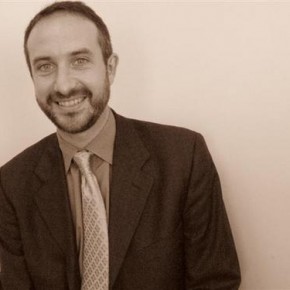
Definitely read his post. I’ll wait. Basically, he walks you through the data-driven story of creating the House of Cards remake for Netflix. Users loved the original series, and those users also loved Kevin Spacey and David Fincher. So Netflix bet $100 million on a series remake starring Kevin Spacey and directed by David Fincher.
That’s right: Netflix bet $100 million on its first-ever experiment with algorithmically-determined original programming. It’s too early to say whether the bet will pay off financially, but early reviews suggest the show itself is pretty darn good.
This is pretty different from how we do it in the arts, right? Any artistic director with an ounce of integrity would cringe at the idea that market research should drive programming decisions.
Yet we’re fooling ourselves if we believe we’re entirely “above” such things. When a ballet company presents its annual Nutcracker it’s doing the same thing as Netflix, just in a cookie-cutter manner and guided by received wisdom rather than cutting-edge data crunching.
That’s Adam’s main point. Data-driven artistic decisions aren’t anything new. It’s just the actual use of honest-to-god spreadsheets and honest-to-god statistics that lets you do data-driven art in a more effective way that’s new. The suspicion about getting smarter, and of what may be perceived as ‘pandering’ made me think of two things.
First, the “old baseball guys” in Michael Lewis’ statistical classic, Moneyball. In the presence of great statistics and sabermetrics, many of them resist and cling to their old ways of doing things. These old ways relied on one look at each player, not aggregate data, and on weird and unrelated things, like faces and body shape instead of on base percentage. One of the “old baseball guys”, though, switched sides. He says they used to do it the old way because they didn’t have a better way. They had to make decisions based on crappy data, because it was the best data they had. Now that we have better data, it’s important to change.
Second, Bill Clinton comes to mind. He often got a lot of flack for pandering to the voters based on polls. Often from the very voters to whom he was pandering. This came up in a This American Life piece in the 2000 election about undecided voters. The president was listening to data, listening to the desires of the American people, and trying to enact it, and was criticized for pandering. On the one hand, you want a leader to have the courage of his convictions. On the other hand, this is a democracy, and we place a little emphasis on the will of the people if you know what I mean. It’s an understandable reaction, and it’s not entirely stupid.
But it seems like a response from an age unused to data. There are stories from the very dawn of statistics in the early 19th century of ‘statistical fatalism’ that are kind of astounding. Say for instance that the data show that there are 50 murders committed every year in Paris. On December 30th, only 49 have yet been committed. People were scared of being the “50th victim,” and stayed home. It seems insane. I made up the number 50, but the story is true. Since then, we’ve learned as a society how statistics actually work, and stopped doing that sort of thing. I feel like we’re in a similar moment with big data. We haven’t really understood the cultural implications of the new science we have available.
For-Profit and Non-Profit
And to Adam’s next point on which I’d like to comment:
What exactly is the dividing line between respecting your audience’s taste and shameless pandering?
With all the hand-wringing over dwindling arts audiences, should it be blasphemy to suggest that we try harder to give them what they want? That’s what every other business on earth does, after all. Of course, a mission-driven arts organization is, in theory, serving a higher (or at least different) purpose as well. If you’re going to descend into full-bore populism, why stop at the Nutcracker or House of Cards? Why not produce another Jersey Shore and actually make a buck or two?
This is a real challenge, but a false dichotomy. I’m certain we can pivot towards greater respect for our audience’s taste preferences without compromising our artistic integrity.
We expect for profit business to pander in order to make a buck, and we expect non-profit arts groups to do something “higher”. Balancing the tug of “full-bore populism” down the road to Jersey Shore, with the impulse to higher things is definitely both a challenge and a false dichotomy. The falsehood becomes more apparent when you look at both approaches in the context of better data, and better analysis.
The distinction between the “profit motive” of a for-profit business and the “mission motive” of a non-profit charity was very stark before big data came around. As a society, we feel that both organizations fill needs – for gainful employment, for self-driven free enterprise, for consumer products, etc., or for cultural products and community service that we feel aren’t being adequately served by for profit businesses, but which we nonetheless want. That’s they key phrase: but which we nonetheless want.
Both kinds of organizations are driven to give people what they want.
Before we had big data, we had to make some guesses about what exactly we should do, and how exactly we should do it, but in the end the metric for success was the same: the happiness of the customers and/or community. Now that we have better tools for figuring out what people actually want, we shouldn’t be at all surprised that for profit and non-profit practice are converging.
The main lesson here, though, is the same as that of Moneyball – don’t fetishize your old methods. They’re familiar, but they were compromises even when they were invented. Look at the goal you’re trying to achieve, and look critically at the new tools for ways that your own judgment can interface with all these spreadsheets. There is a role for human ingenuity, but it doesn’t give numinous talent the same unquestionable primacy anymore. And that’s okay. Just learn to use excel and you’ll be well on your way.
